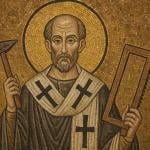William Swatos’s 1979 monograph, Into Denominationalism, is a model of careful historical and sociological judgment. Though he relies on secondary scholarship, the book is rich in historical detail, even though it covers a wide swath of history, from Henry VIII to the establishment of the Episcopal Church in the US. Swatos is also theoretically sophisticated, defending Weber’s church-sect typology by tracing the development of Anglicanism through a nuanced version of Weber’s model. Two polarized factors shape whether a given communion acts... Read more




















